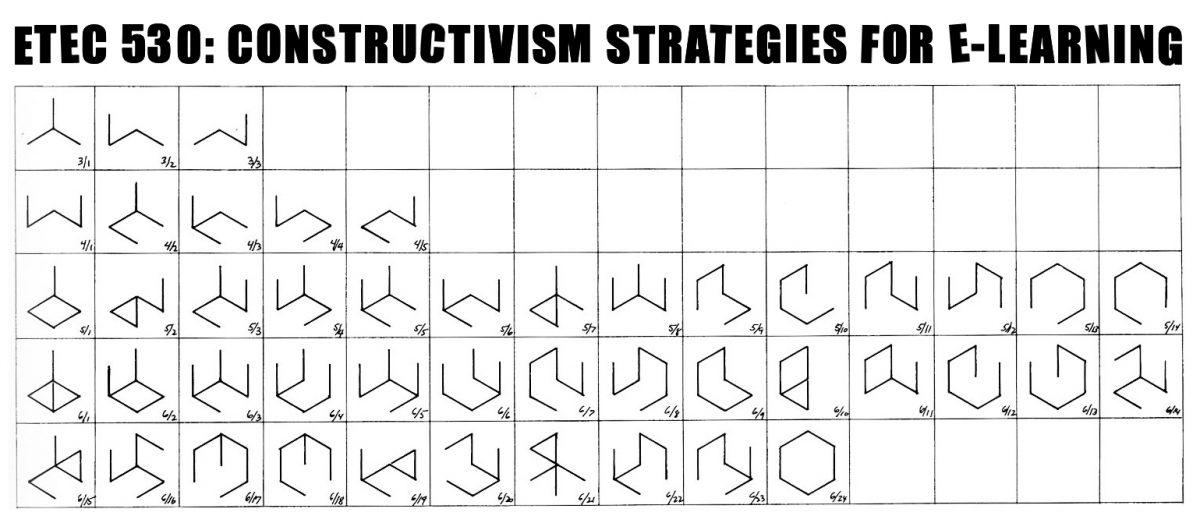Acknowledging My Prior Knowledge
To illustrate my synthesis of the content within this course, it only makes sense that I would start by sharing key cultural references that have positioned and informed my conception. I have a fine arts academic background that was focused on critical theory, and visual and cultural theory. In a previous discussion within this course, I shared how my introduction to semiotics activated a profound paradigm shift for how I have come to view my world, (my “worldview” or “Weltanschauung”, as Swoyer (2014) describes). I began to see the world as a fluctuating construct built with signs and symbols, with a deeply layered and complex system of meaning.
The theories of Vygotsky and Piaget were introduced early in the MET program. I immediately connected with Vygotsky’s sociocultural theory for its explicit coherence with semiotics, “…Vygotsky (1978) emphasized the importance of social interaction with more knowledgeable others in the zone of proximal development [ZPD] and the role of culturally developed sign systems as psychological tools for thinking” (Fosnot, 2013, pp. 41-42). In a later MET course, I discovered Latour, Actor Network Theory and New Materialism, concepts that radically amplify elements of sociocultural theory and constructivism by emphasizing the importance of the relational space between everything, including living and non-living things. Everything has agency, everything is in flux, and everything has come from somewhere and will continue somewhere else in a continual state of becoming.
Actively Scaffolding
As I develop my understanding of constructivism through reading about the classical philosophical ontologies and epistemologies it emerged from, I tap into my collected experience, rearrange, and adjust what is there to find a place where something new can fit, a process analogous to Piaget’s notion of equilibration, “a nonlinear, dynamic “dance’ of progressive equilibria, adaptation and organization, growth and change” (Fosnot, 2013, p. 18). Through Pritchard’s (2018) text, I connected with the notion of indirect realism, “the idea is that we can only make sense of our perceptual experiences as responses to an external world, even if we are not directly acquainted with this world in perceptual experience” (p. 69) and Kant’s notion of transcendental idealism, “the leading idea was that much of the structure that we ascribe to the world – such as the temporal or casual order – is in fact a product of our minds” (p. 73). Although the concepts appear similar, I speculate that a key difference lies in the concepts’ origins, with indirect realism emerging as a modern take on realism, and transcendental idealism emerging as a more grounded, more reasonable view of idealism. Both assert that a reality exists, but that it cannot be directly experienced through sense perceptions: the former focuses on the ‘real’ objective world and acknowledges that perception requires internal construct; the latter focuses on a constructed world and acknowledges that its validity requires the existence of ‘real’ objective world. Both correlate with semiotics and sociocultural theory and substantiate and enlighten my own becoming.
Traversing the ZPD
My interpretation of constructivism combines notions of cognitively constructed realities that are inherently affected by the environments they develop from and with. I subscribe to Fosnot’s (2013) claim that social and cognitive constructivism are connected processes, “in effect, active individual construction constitutes the background against which guided participation in cultural practices comes to the fore for Rogoff, and this participation is the background against which self-organization comes to the fore for von Glasersfeld” (p. 48). However, I see both cognitive and social constructivism as holding equal weight. This results in a personal conceptualization of learning that portrays a constant and potentially chaotic movement of inward reflection and outward connection: information outwardly gleaned is subject to relational affect through an infinitely vast and dynamic entanglement, and the information taken in is subject to the inner network of collected knowledge – a microcosm of said entanglement.
In previous discussions in this course, I questioned Pritchard’s (2018) cynical take on relativism and interpreted it as a signal to be cautious with the subject, yet after reading Swoyer (2014) and watching Taber’s (2020) talk, I am not certain such caution is warranted. Swoyer explains that relativism asserts that “…what we see (hear, feel, etc.) in any particular situation is partially determined by the concepts, beliefs, and expectations we bring to the situation”, a perspective that aligns with my worldview. Swoyer implies that extreme forms of relativism invite criticism. Taber refutes this criticism and suggests it’s the opposers who assume constructivists and relativists take this extreme stance. Taber explains, “…assuming a greater level of objectivity than what is possible is what would really be unscientific. By applying appropriate methods to the materials studied, a researcher seeks to be more scientific. Again, the choice made by constructivist researchers is not an ideological rejection of objective methods but doing the best job considering the nature of the task at hand” (Taber, 2020). This epitomizes what education can and should be – like an outward iteration of the internal act of equilibration, our aim should be to assess and reflect on the methods available, to welcome “adaptation and organization, growth and change” (Fosnot, 2013, p. 18) to create and facilitate the necessary conditions for learning to succeed.
References
Fosnot, C. T. (2013). Constructivism: Theory, perspectives, and practice (2nd ed., pp 3-54). Teachers College Press.
Pritchard, D., & ProQuest (Firm). (2018). What is this thing called knowledge? (Fourth;1; ed.). Routledge. https://doi.org/10.4324/9781351980326
Swoyer, Chris, “Relativism”, The Stanford Encyclopedia of Philosophy. (Spring 2014 Edition), Edward N. Zalta (ed.).
Taber, K. (2020, December 11). Constructivism – the good; the bad; and the abhorrent? [Video]. University of British Columbia. https://edcp.educ.ubc.ca/constructivism-the-good-the-bad-and-the-abhorrent/


